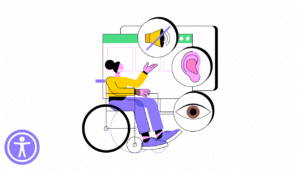Potential customers can form an opinion about your business seconds after visiting your website. They look at user-friendliness, responsiveness, loading time, and the overall appeal of the design. A great website emphasizes brand consistency by ensuring that the outline, styles, and fonts across the site are in sync. In addition, a great web design eases navigation by reducing and merging similar product menu options. It also enhances usability by making it easy for users to access any information they search for. Below are tips for designing a great real estate & property website.
1. Make your website responsive
A responsive web design adapts to any screen size without compromising quality. Whether you are a residential real estate listing company or a local homebuyer like Properties, use high-quality images and optimize them to ensure site responsiveness. A responsive site allows users to bookmark their favorite properties and save their searches for when they return.
2. Build and optimize lead capture designing a real estate website
Lead capture involves getting a prospect’s information and saving it to convert them into paying customers. Encourage your visitors to share their personal information by offering promotions, showing the benefits of subscribing to your newsletter or email list, and designing attention-grabbing contact forms. To promote communication between you and your potential customers, leave your contact details on every web page and attach links leading to your social media accounts.
3. Include search tools
When users visit your real estate site to buy or sell, search tools should be readily available to ease their search. Realtors’ websites should have search tools like an advanced search page for buyers and sellers who know what they want, quick search toolbars for first-time buyers. So, interactive map search page for homeowners who wish to relocate within the same locality and buyers looking for a particular area.
4. Optimize your site for SEO designing a real estate website
If you want prospective clients to find you, optimize your site for SEO. Using relevant and valuable keywords in headlines, title tags, and high-quality content makes it easy for SERPs to locate your website and rank it for SEO. Creating high-quality content and linking to authoritative sites also helps your site rank high to increase web traffic and boost SEO.
A gorgeous website that loads slowly or lacks structure is a liability.
Essentials:
- Use clean, semantic HTML and structured data (Schema.org for real estate)
- Compress images for speed
- Ensure fast hosting with 99.9% uptime
- Build crawlable site architecture (XML sitemap, logical URLs)
- Add metadata, alt tags, and optimize for voice search
5. Add a portfolio and reviews section
It’s not easy for potential clients to trust you unless someone they trust referred them to you. A portfolio serves as proof that others have trusted you before and you delivered; it’s where you showcase your talent and show off your achievements.
In addition, when buyers or sellers visit a real estate website, they go to the reviews and testimonial section to find out what past clients have to say about your business. Ensure that you offer impeccable service to your customers so that they can leave positive reviews and testimonials. This improves credibility and trust among your prospective clients.
- Feature high-resolution, professionally taken images
- Use wide shots and detailed close-ups
- Offer 3D walkthroughs or virtual tours
- Highlight the neighborhood with drone shots or lifestyle visuals
Property & Real Estate Website Designing Elements Checklist
| Component | Purpose | Optimization Tip |
|---|---|---|
| Homepage Hero Section | First impression and brand alignment | Use a compelling image + clear CTA |
| Search Functionality | Help users find listings fast | Include filters for price, type, beds, location |
| Listing Pages | Display property details effectively | Include gallery, floorplans, maps, forms |
| About/Agent Pages | Humanize the experience | Add bios, certifications, testimonials |
| Contact Forms | Capture leads | Keep it short and mobile-friendly |
| Blog or Resources | Drive SEO traffic and educate users | Target local keywords and buyer concerns |
| Testimonials | Build trust | Place them throughout the user journey |
| Footer Navigation | Improve user flow and SEO | Add quick links, contact info, and social |
Endnote designing a real estate website
Your website determines the success or failure of your business. Design a great website and optimize it for performance and user experience.








